calsfoundation@cals.org
St. Johns' College
St. Johns’ College in Little Rock (Pulaski County), a school created and run by Arkansas Freemasons, was the first institution of higher education chartered in Arkansas (though the third to open its doors). During its short life, it trained some of the most important future leaders in Arkansas. The vision of the people involved set the stage for Arkansas to provide a quality education for its citizens.
Grand Master Elbert H. English, at the annual communication of the Grand Lodge of Arkansas in November 1850, announced the desire of state Masons to create a college for the purpose of educating Arkansas’s citizenry: “Several of the Grand Lodges of our sister states have led off in this noble cause by the establishment of Masonic Colleges, and a general disposition pervades the fraternity of this state to follow their example.” In the November 15, 1850, issue of the Gazette and Democrat, the report of the Committee on Education of the Grand Lodge was published, stating the goal of the fraternity. Governor John S. Roane approved the legislative act on December 31, 1850, chartering St. Johns’ College of Arkansas as the first college in Arkansas. The trustees met on January 17, 1851, with George C. Watkins, president; Elbert H. English secretary; and Roderick L. Dodge, treasurer. Funding for the college came from sources such as the Grand Lodge and the Grand Chapter of Royal Arch Masons appropriating their surplus money, subscriptions of the subordinate lodges, Masons, and the general public.
At the 1851 annual communication of the Grand Lodge, Little Rock was chosen for the college’s location. On July 16, 1852, the trustees purchased one hundred acres of land, for $5,500, to establish the college. The land was located east of the Federal Arsenal (now MacArthur Park). Some years later, James and William Vance donated an additional five acres, giving the college a campus of 105 acres. Of the purchased land, forty acres were set aside for the college, while the remainder was platted for sale to provide an endowment for the college (this was known as the Masonic Addition to the City of Little Rock). It was five years before enough funds had been raised to begin constructing buildings on the campus.
The True Democrat reported in its November 16, 1857, issue: “On last Thursday (November 5) the corner-stone of St. Johns’ College was laid by the Masonic fraternity, the Grand Lodge of the state being in session.” Its main building being complete, St. Johns’ began its classes with about fifty students on October 10, 1859, with John Baker Thompson as president, William Naylor Bronaugh as vice president, and John B. Lewis as drill master. By this time, two other colleges in Arkansas were holding classes: Arkansas College in Fayetteville (Washington County) and Cane Hill College at Cane Hill (Washington County).
The college’s success was halted with the outbreak of the Civil War. The three professors enlisted in the Confederate army, and many of the students followed, enlisting in the Capital Guards under the command of Gordon N. Peay. The Grand Lodge gave permission to the Confederate forces in Little Rock to use the college as a hospital, and they erected eleven buildings. When Union general Frederick Steele took Little Rock on September 10, 1863, the Union army also used the college and its campus as a hospital. The college was also the site of the January 8, 1864, execution of Confederate spy David O. Dodd. By 1865, the college was a major military hospital serving over 8,000 patients. In 1867, the U.S. government returned the land and buildings of the college to the Grand Lodge. St. Johns’ resumed classes in October 1867 with Luke E. Barber as president.
The financial situation of the college was in ruin. All the money collected and placed in trust was lost during the war. The state’s economy was likewise decimated, and the few Masonic lodges that remained had empty treasuries. However, by the 1869 term there were over 100 cadets enrolled. In 1872, more dormitory space was needed, and a separate building was erected. The money for the dormitory came from the sale of lots in the Masonic Addition. The college continued to prosper with the addition of a law department in 1873. The college closed for a brief time during the Brooks-Baxter War of 1874. Joseph Brooks, who claimed the election for himself, had ousted Governor Elisha Baxter from the governor’s office, and Baxter went to St. Johns’ College to establish his office and formed the cadets into his bodyguard.
The Grand Lodge of Arkansas ended its funding of the college in 1878 and “leased” it to Professor Leo Baier. Baier made some improvements, and the enrollment increased to 142 by 1881. After Baier retired, W. J. Alexander assumed the contract, and the college continued until 1882, when the Grand Lodge voted to sell all the property of the college and the Masonic Addition in order to raise funds to build a new Masonic temple in Little Rock. No students were taught at St. Johns’ after 1882.
The Grand Lodge offered the college and grounds for sale without success until in the winter of 1889, when a buyer was found who would pay $25,000 for it in its entirety. On January 17, 1890, the college buildings burned to the ground.
For additional information:
Hempstead, Fay. Pictorial History of Arkansas. St. Louis: N. D. Thompson Publishing, 1890.
Herndon, Dallas T. Centennial History of Arkansas. vol. 1. Chicago: S. J. Clarke Publishing, 1922.
Pierce, Aaron B. “St. John’s College.” Pulaski County Historical Review 36 (Summer 1988): 39–44.
Proceedings of the Most Worshipful Grand Lodge, Free and Accepted Masons of Arkansas. Little Rock: 1848–1890.
Reynolds, John H., and David Y. Thomas. History of the University of Arkansas. Fayetteville: University of Arkansas, 1910.
Ross, Margaret Smith. “Arkansas’ History Wound Itself Around St. John’s.” Arkansas Democrat Sunday Magazine. November 19, 1950, p. 12.
Smith, C. Eugene. Proceedings of Arkansas Research Lodge No. 739. vol. 1, no. 3. Little Rock: 1949
Dick E. Browning
Maumelle, Arkansas
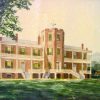
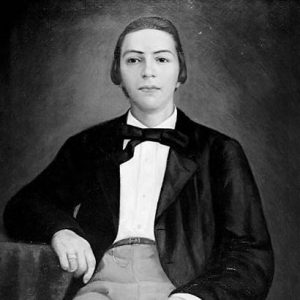 David O. Dodd
David O. Dodd 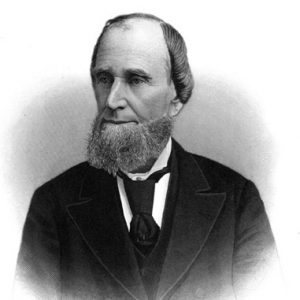 Elbert English
Elbert English 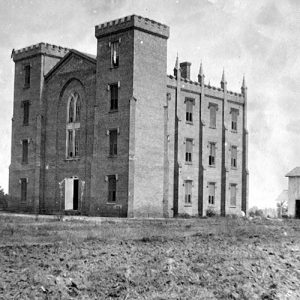 St. Johns' College
St. Johns' College 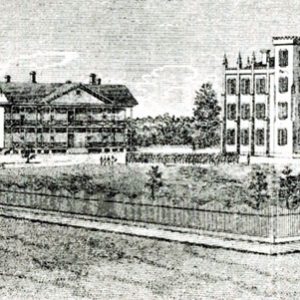 St. Johns' College
St. Johns' College  St. Johns College and U.S. Hospital
St. Johns College and U.S. Hospital 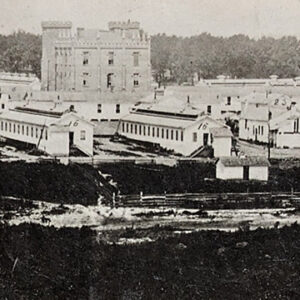 U.S. Army Hospital
U.S. Army Hospital 



Comments
No comments on this entry yet.